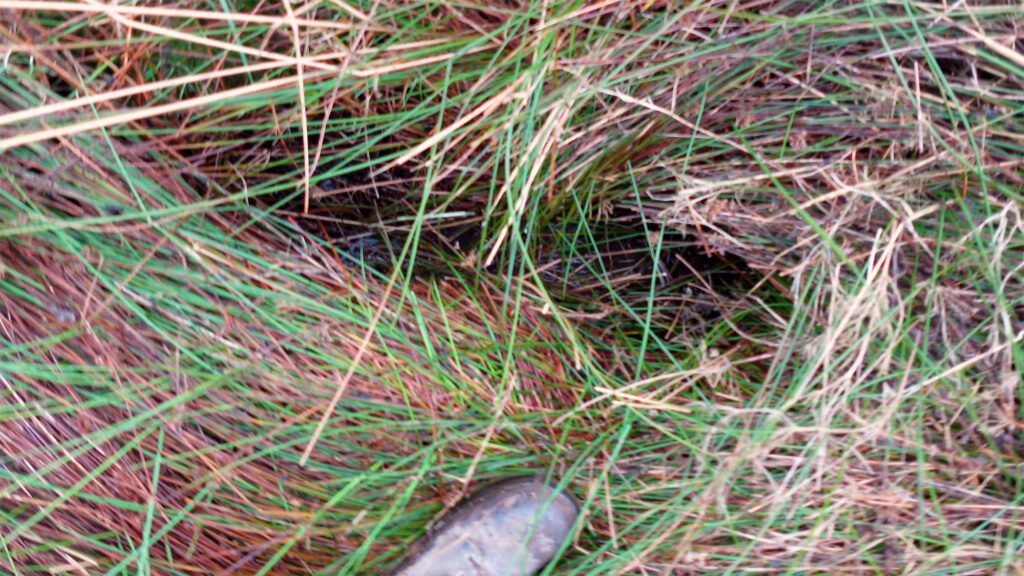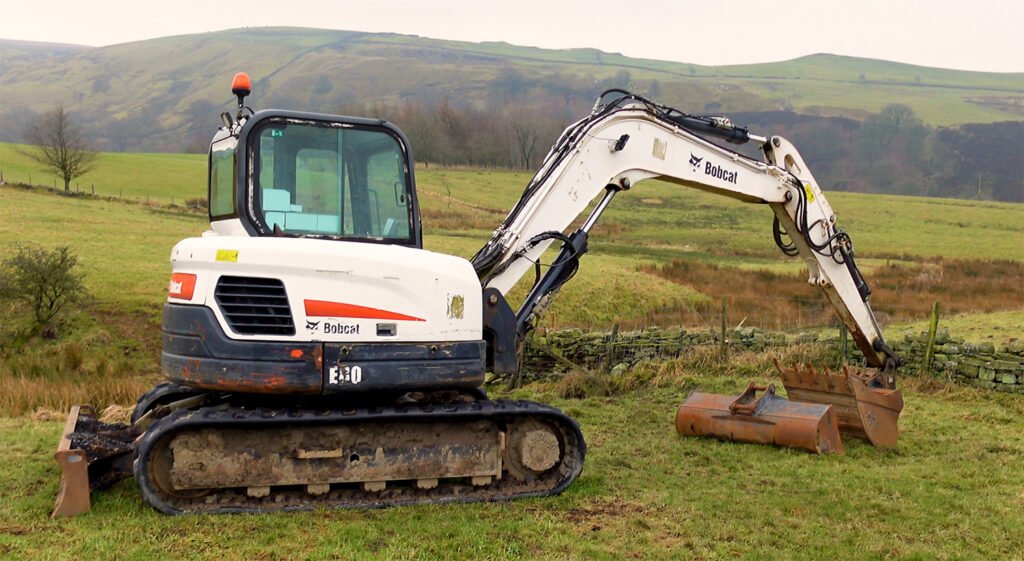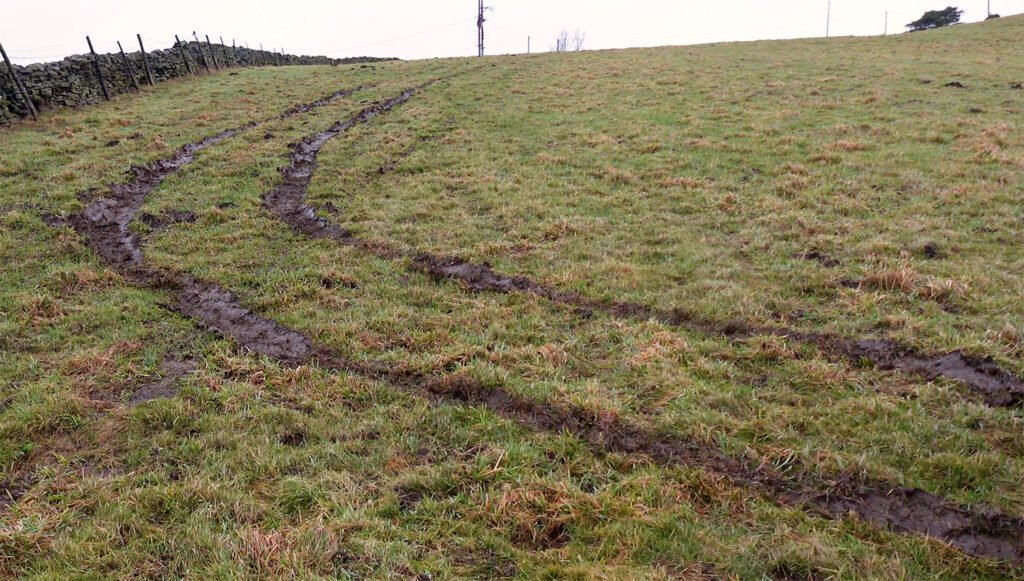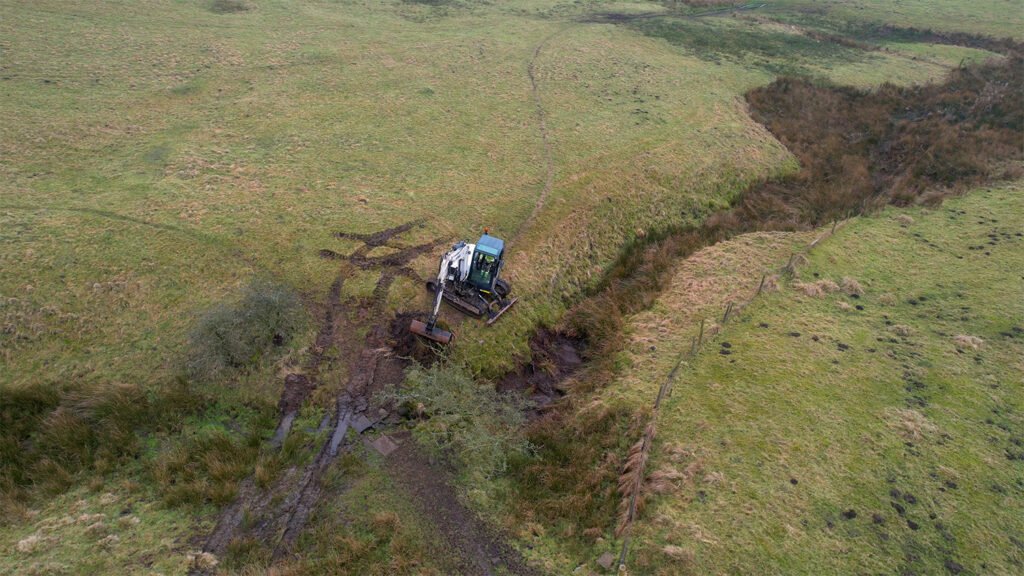How hard is it to dig out a dyke in a boggy field? We’ve got a brand new video to watch but here’s a helpful set of tips for your next excavation!
Don’t fall in

It may sound simple but as you can see in the video, nobody is immune! The whole reason we’re digging a dyke is to help re-route water. Without one, it finds its own route and makes for large, boggy marshes which can lead to hidden holes. While checking the depth of the area, Phil put his foot in it. And then the rest of his leg and body.
Don’t leave your excavator in a field for two months

We had plenty of time to get the first part of the job done. There’s optimum times to do things, but we’re not up against tough deadlines for this one. As such, the snowy, wet, subzero winter we just had was not the ideal time to take to a steep field. As we had the capability, we left our excavator on its own in the field for a couple of months. Seemed like a good idea at the time but the poor little guy got a bit frozen up over the months! When it came to doing the work… would it start?
Don’t drive in the bog

Again this seems like obvious, sensible advice. But when you’re trying to get closer to your job and you’ve got machinery to hand… it’ll be alright, right? We had the excavator doing its bit, but it needed to drive into the dyke to carry on working. We’ve already seen Phil loose his footing, losing the excavator would be a disaster!
We’ve also got a 4×4 on the field to get us around. That would be more than capable of getting us up the wet hill, right? We certainly wouldn’t beach that in a mudbath at the bottom of the hill, no no.
Take awesome drone shots

At ground level, you need to make sure you’ve got clear plans to where you’re going. On a marshy field it is easier than you think to lose your way. With a drone hovering above you, you can see your full route, plus it looks absolutely brilliant.
Watch the video and don’t forget to subscribe to our YouTube channel!
